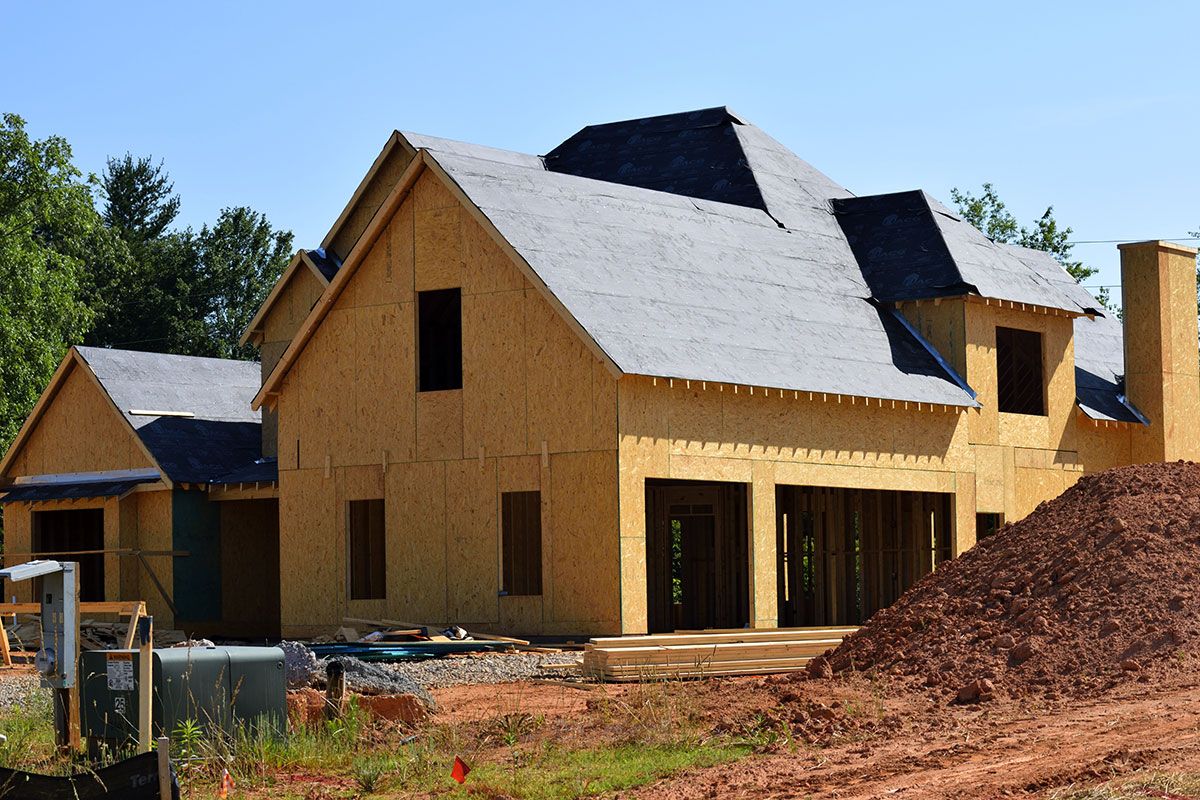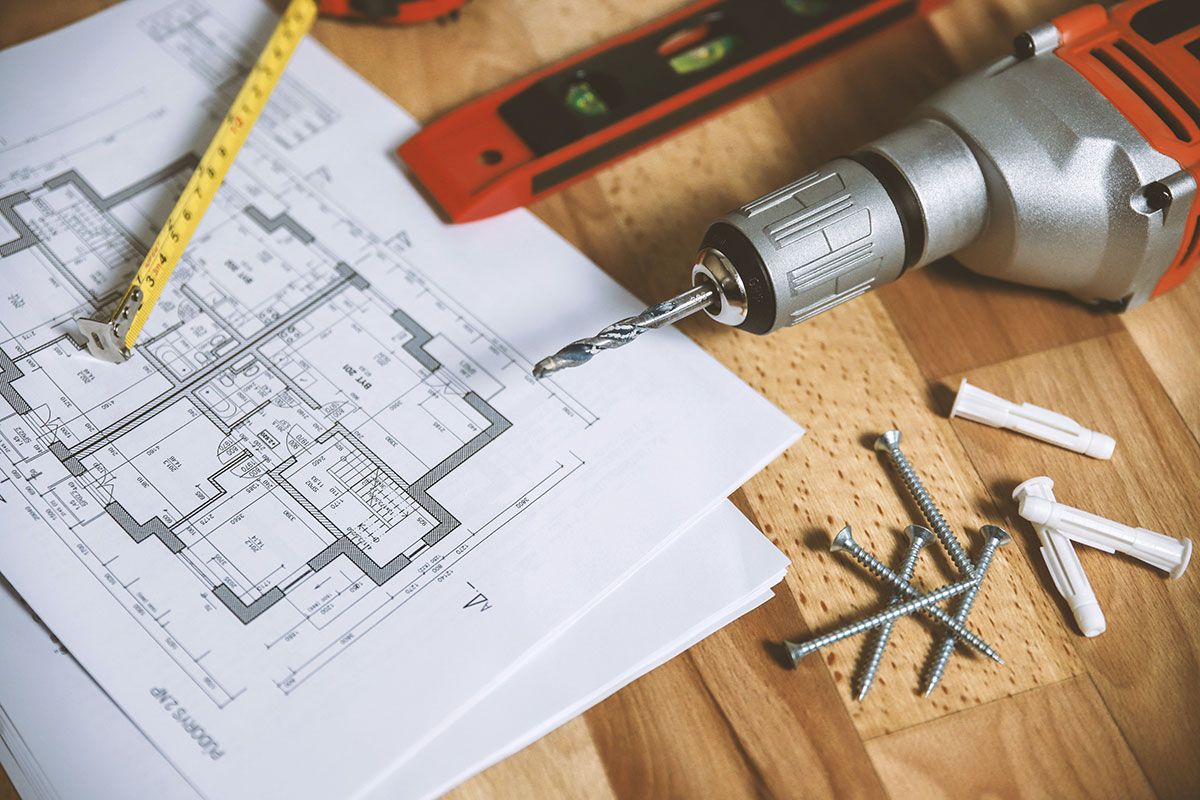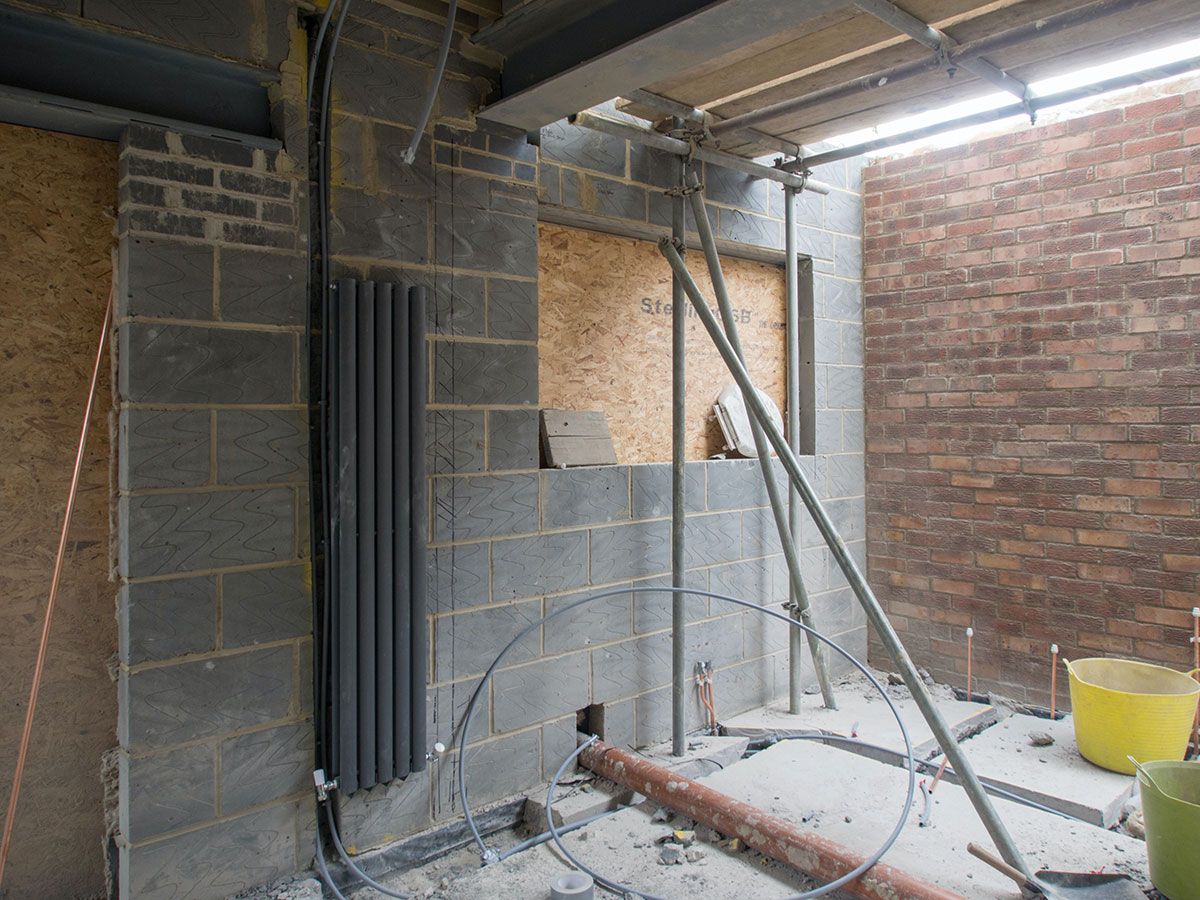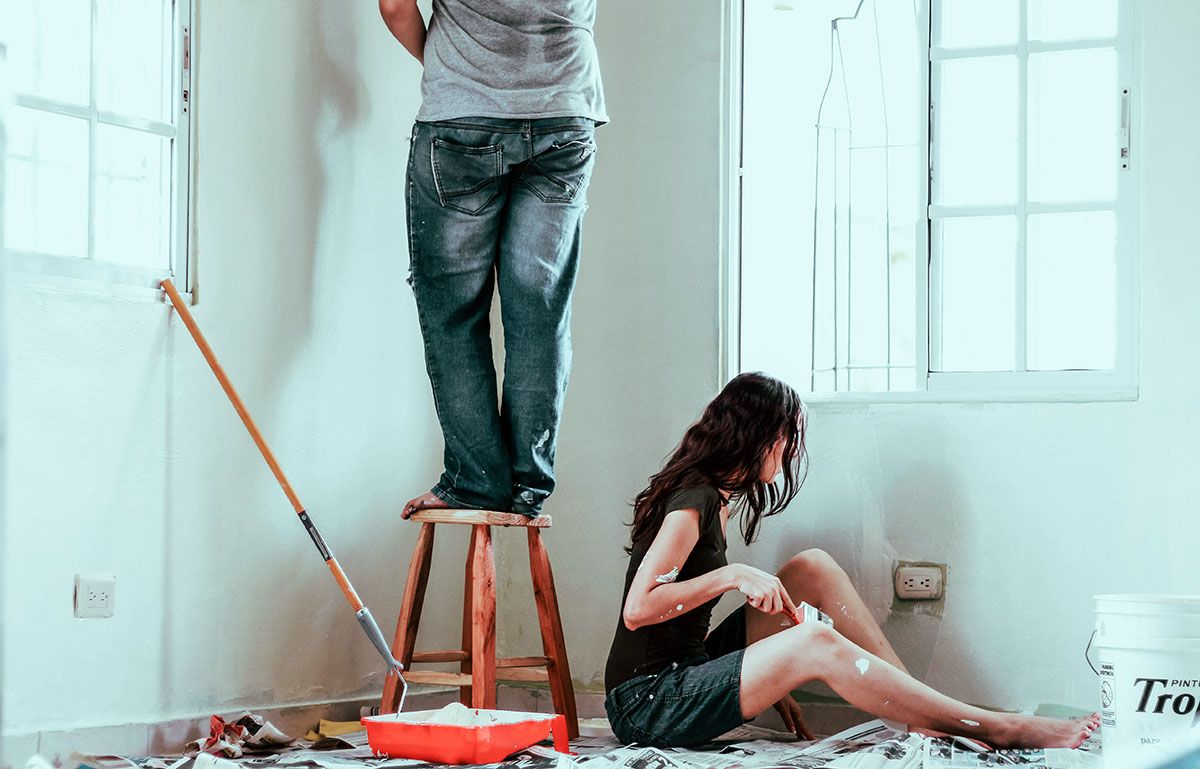How Much Does It Cost To Build a House?

Many homebuyers are happy to purchase a house that’s already on the market, whether it’s move-in ready or a fixer-upper. However, there will always be those who have their sights set on building their own house from the ground up. For those ambitious and resourceful enough to take on this challenge, know that you have a lot of work ahead of you that will take extensive planning and budgeting to make your dream home a reality.
Average Cost To Build a House Breakdown
- Land
- Floor Plans
- Building Permits
- Foundation and Framing
- Plumbing and Electrical
- Exterior and Roofing
- Interior Finishes
Before you make the final decision to build a new home, you will have to carefully evaluate the overall cost including land, permit fees, living expenses, construction materials, labor, and interior finishes – not to mention leaving an allowance for any unexpected expenses (and there will be some). That said, building a new house can be an incredible experience and when it’s done, you will be rewarded with a bespoke home that’s exactly what you want.
How Much Does It Cost To Build a Home?

Depending on the scope of your project the total construction cost will vary widely, but the national average to build a house is approximately $350K. Of course, there are several factors that will cause this number to go up or down that you will have to take into account. And, while you can and should come up with a realistic budget, know that your estimate will likely have to be revised along the way to account for unforeseen challenges or delays.
Land - $80,000 - $100,000
Before you start daydreaming about your new kitchen or walk-in closet, you have to purchase the land for your home. How much you will pay in land cost can range from a few thousand dollars to over $100K depending on where you want to build. If you’re looking to spend less money and like the idea of living a rural life off the beaten path, you may be able to snag a plot of land for as little as $5,000. On the other hand, if you’re married to city life and are in a hot housing market like the northeast or west coast, you can expect to pay upwards and above $100K just for the land itself. Also, the total square footage of your plot of land can dramatically affect your price as well.
On top of this, you will also have to prepare the land to be built on and this could include demolition of any existing structures, soil testing, as well as excavation and grading of the site. Real estate values vary widely depending on your location, but you can expect to spend $80,000 to $100,000 on average in the U.S.
Floor Plans - $5,000

Before you can break ground, you will need building plans. You will need to work with an architect or have your general contractor manage this stage for you. Expect to pay around $5,000 for the plans on average, but know there are always ways to increase or decrease this cost. Many architects and contractors will have stock blueprints of homes that will cost much less, but if you have your heart set on a completely custom house you will be looking at tens of thousands of dollars for the design itself. There’s also a middle ground where you may choose to start with a pre-existing home design, then work with an architect to add your own personal touches.
💵 30+ Ways To Save More Money At Home.
Building Permits - $2,000 - $3,000
Each state and municipality will have requirements regarding residential construction, so you will always want to research local ordinances ahead of time. In general, bigger cities will charge more for these permits (and require more) than smaller towns or rural areas.
To start, you will need a general building permit before you can start any work and this should cost you between $2,000 to $3,000. However, you will also need permits and inspections throughout the entire process for grading, electrical, plumbing, septic, foundation, insulation, roofing, HVAC, or even fencing. Your home builder should be familiar with local codes and be able to tell you how much of your cost will be eaten up by building permits. Final costs will depend on several factors, such as meeting deadlines, passing inspections, and obtaining the correct materials for the job.
Foundation and Framing - $50,000 - $60,000
Establishing a solid foundation is perhaps the most important step in the home building process. Without a strong base, it won’t matter how well the rest of the house is built. Because so much is riding on your foundation, you don’t want to skimp here. That said, there are ways to save money depending on your building plans.
A single-level home with a concrete slab foundation will be the cheapest, while plans that call for a crawl space or basement will be more expensive. You will also need to consider where you’re building and whether your location may entail additional costs. For example, if you’re on the West Coast, there’s a substantially increased risk of earthquakes and there will be additional safety requirements to consider. Consult with your contractor about preemptive steps you can take now to mitigate damage. This could include pouring taller or thicker footing, or bolting the foundation to the frame of the home.
Pouring a foundation coupled with framing the house will eat up as much of a third of your budget. Framing requires careful planning, and a high labor cost and material cost, both of which have continued to rise in recent years. Specifically, the amount of lumber that’s needed to frame even a modestly-sized house can set you back upwards of $40,000 since it makes up the floors, wall frames, trusses, and plywood sheathing.
Plumbing and Electrical - $50,000 - $60,000

Plumbing, electrical wiring, and ducting is another large expense in your overall building costs. This includes laying pipes for any bathroom, kitchen, utility sinks, or outdoor spigots, wiring throughout the entire house, and HVAC. These systems require a lot of labor and materials, but there are many factors to take into consideration as well as ways to cut these costs. For plumbing, using PVC or PEX pipe can save you thousands compared with copper.
Additionally, a more extensive floor plan will increase your total price since electrical wiring costs around $4 per square foot and you will need a licensed electrician to perform this work (not to mention inspections and permits), but this will typically be subcontracted with your construction company. Your average cost will also be affected by what kind of climate you live in. For example, if you’re building in San Francisco, California you can likely get away without installing an AC unit since even in the summer months the temperature rarely goes about 75 degrees. On the other hand, living in Fort Worth, Texas, or Phoenix, Arizona will require owning a robust AC unit.
👉 The Best Home Contractor Apps.
Exterior and Roofing - $50,000 - $60,000
Exterior work includes roofing, siding, windows, and doors. Like every element of your home, your total cost will be heavily influenced by the type of building material and exterior finishes you choose, including solar panels. Custom windows and doors will be much more expensive than standard vinyl windows and doors. Choosing vinyl siding over wood can significantly reduce costs. On average, you can expect to pay a little over $50,000.
Interior Finishes - $100,000 - $120,000
Finally, the interior finish needs to be completed. This is where costs can really rise because so much is covered here. Your contractor will install insulation, drywall, cabinets, countertops, flooring, trim, paint, sinks, showers, tubs, and everything that makes a house feel like a home and become move-in ready. Luckily, there are ways to cut down on costs here, too – keep reading to learn more.
How Can You Save Money When Building a House?

No matter which way you look at it, houses are expensive whether you buy an existing home or build your own. So if you’re looking to reduce costs right from the start, or you’re halfway through your new construction project and realize you’re way over budget, keep these tips in mind to keep the prices down.
If you’re still in the planning stages, first think about how you will cover the upfront cost of the construction and whether applying for a home improvement loan could be a good option for you. When shopping around for a construction loan, you should get quotes from at least three different lenders because they’ll all have slightly different packages. Even reducing your interest rate by half a point can result in real savings in the long term.
There are a few different types of home loans to consider. Typically, you will be choosing between a construction-to-permanent loan or a construction-only loan. Construction-to-permanent loans fund the home building process, then convert to a traditional mortgage once it’s complete. Construction-only loans mean you will have to figure out how to get a mortgage loan after the construction is completed.
Before breaking ground, you can also save money by choosing stock home construction plans instead of customizing them. Hiring a professional architect or engineer to draw up plans from scratch is an additional cost that most people don’t actually need. Ask your contractor for stock options and more often than not, home builders will be willing to work with you on small changes here and there that won’t require shelling out the big bucks. Always be upfront about your financial limits so they know what they can offer while remaining within your budget. You may decide to reduce the overall square footage and living area of your home since most people will pay between $100 to $200 for every square foot.
Lastly, anything you can DIY can save you considerable amounts of money on labor, but you need to have the skills to complete the work. This option is best left for interior finishes like trim work, painting, assembling cabinets and cupboards, or landscaping since these tasks can be done by someone with basic home improvement skills.
If you’re a competent handyperson, you could also take on projects like installing insulation, drywall, or flooring. But with this comes a caveat: Never take on a job that you’re not confident you can complete. If you end up botching it, you will likely have to pay more than you originally would have to hire a builder to fix it. Plus, you will have wasted time and materials.
Estimated Costs To Build a House
The housing market is always fluctuating. Depending on when you want to buy and what you’re looking for, you may not find anything that fits the bill. For some, this means simply postponing this venture to another day. Other buyers may decide to take matters into their own hands and build a house from the ground up. Or, you may have been planning for years to construct a home that’s unique to your own needs and style and are ready to get the ball rolling. Whatever brought you to this stage, you are in for an exciting and busy time. Just be sure that you stay on top of all the details and have a realistic concept of how much everything will cost.